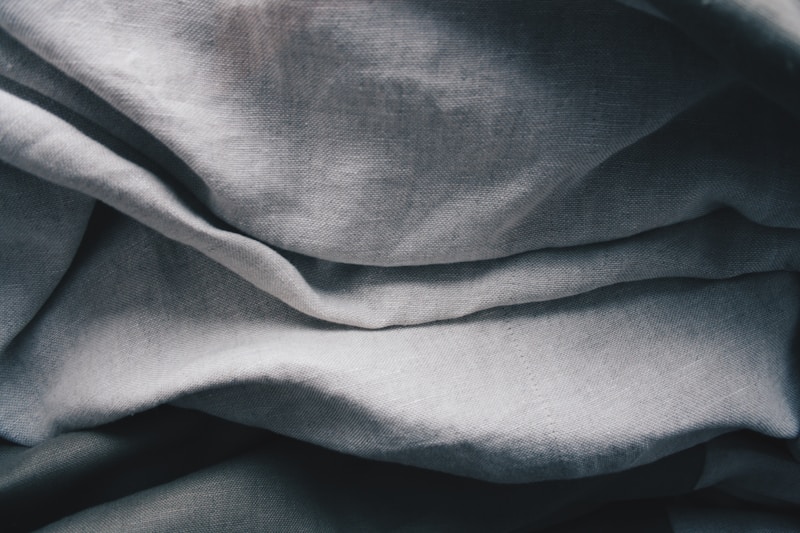The Art of Fabric Draping in Bridal Wear: A Comprehensive Guide
When it comes to bridal fashion, the art of fabric draping plays a pivotal role in defining the style and elegance of a wedding dress. Draping, an age-old technique that involves arranging fabric on a dress form to create structured designs, is essential in conveying the personality and vision of a bride. This article delves into the intricacies of fabric draping in bridal wear, exploring techniques, styles, and tips for brides-to-be.
Understanding Fabric Draping
Fabric draping is not just about placing fabric; it's an essential technique that transforms the silhouette of bridal gowns. The draping process can vary widely depending on the desired style, fabric type, and the designer's vision. It requires an understanding of how different materials behave and how they can be manipulated to achieve the desired aesthetic.
| Fabric Types | Characteristics |
| Silk | Luxurious, smooth, and drapes beautifully; perfect for ethereal looks. |
| Chiffon | Lightweight and sheer; often layered for added texture and volume. |
| Taffeta | Stiff and crisp; ideal for structured designs. |
| Lace | Often used for overlays; adds femininity and complexity to the dress. |
Popular Draping Techniques in Bridal Wear
Bridal designers employ several draping techniques to create stunning Wedding dresses. Here are some of the most popular methods:
1. Asymmetrical Draping
This technique involves creating a gown where the fabric flows unevenly, often enhancing the silhouette and visual interest of the dress. Asymmetrical draping can highlight one shoulder or create a cascading effect down one side, making it a popular choice for modern brides.
2. Gathered Draping
Gathering is a technique where the fabric is pulled together at certain points to create soft folds and volume. This style works well for A-line dresses or ball gowns and can be enhanced with embellishments for a more romantic look.
3. Ruched Draping
Ruching involves the gathering of fabric in a way that creates a textured appearance. This technique is often used around the waistline to flatter the figure and can also add depth and dimension to the bodice.
4. Pleated Draping
Pleats are folds of fabric that are sewn down but allowed to billow out, offering a structured yet elegant look. This technique can be used throughout the gown or just as an accent feature.
The Importance of Choosing the Right Fabric
When discussing the art of fabric draping in bridal wear, the choice of fabric is paramount. Different materials can yield vastly different results. For example, heavy fabrics like taffeta hold their shape well and can create dramatic silhouettes, while lighter materials like chiffon are better suited for soft, flowing styles.
Considerations for Fabric Selection
Here are some considerations every bride should take into account when selecting fabric for her wedding dress:
- Season: Consider the climate of your wedding day. Heavier fabrics are best for cooler months, while lighter ones are suitable for summer weddings.
- Body Shape: Different fabrics can enhance or detract from your natural shape. Choose materials that flatter your figure.
- Personal Style: Reflect on your personal taste and the overall theme of your wedding when selecting fabric.
Customization and Personalization
One of the most beautiful aspects of bridal fashion is the potential for customization. Many brides choose to personalize their gowns through unique draping techniques, adding personal flair to traditional designs. Here are some ways to personalize your wedding dress:
1. Incorporating Family Heirlooms
Integrating family heirlooms, such as lace from a mother’s or grandmother’s wedding gown, into your dress can create a meaningful connection between past and present.
2. Adding Embellishments
Beading, sequins, and embroidery can enhance the draping of the fabric, making the gown even more stunning. Strategic placement of embellishments can draw attention to beautiful drapes and swathes of fabric.
3. Altering Length and Cut
Customizing the length of trains or necklines can dramatically alter the overall look of a bridal gown. Discussing options with a designer can help achieve the perfect fit and style.
Choosing the Right Bridal Designer
Finding a bridal designer who specializes in fabric draping can make a significant difference in achieving your dream dress. To help brides navigate this process, here are some tips:
- Research: Look for designers with a portfolio that resonates with your vision.
- Consultations: Schedule consultations to discuss your ideas and preferences thoroughly.
- Reviews: Read reviews from previous clients to gauge their experience and satisfaction levels.
Care and Maintenance of Draped Wedding gowns
After crafting the perfect draped wedding gown, proper care and maintenance are essential to preserve its beauty. Here are some tips to keep it looking pristine:
- Cleaning: Always follow the care label instructions and consider professional cleaning, especially for delicate fabrics.
- Storage: Store the gown in a cool, dry place away from direct sunlight. Use a breathable garment bag to avoid crushing the draping.
- Preservation: Consider having your gown professionally preserved after the wedding to prevent yellowing and maintaining its beauty for years to come.
Summary and Final Thoughts
In conclusion, the art of fabric draping in bridal wear is a critical aspect that significantly influences the final look and feel of a wedding dress. Understanding different draping techniques and fabric choices allows brides to express their unique styles and make their special day unforgettable. Whether it’s choosing flowing chiffon or structured taffeta, brides must select materials that enhance their figures and reflect their personalities.
As you embark on your journey to find the perfect bridal gown, remember to explore various options and consider expert advice. The right combination of fabric and draping can create a stunning masterpiece that you will cherish for a lifetime. Happy gown hunting!
